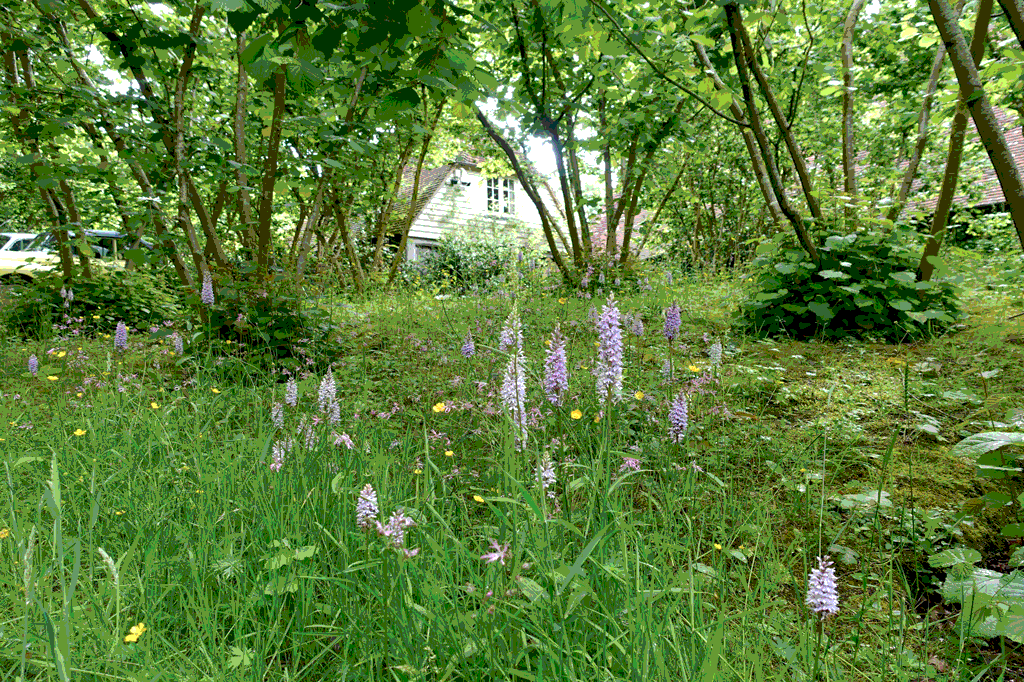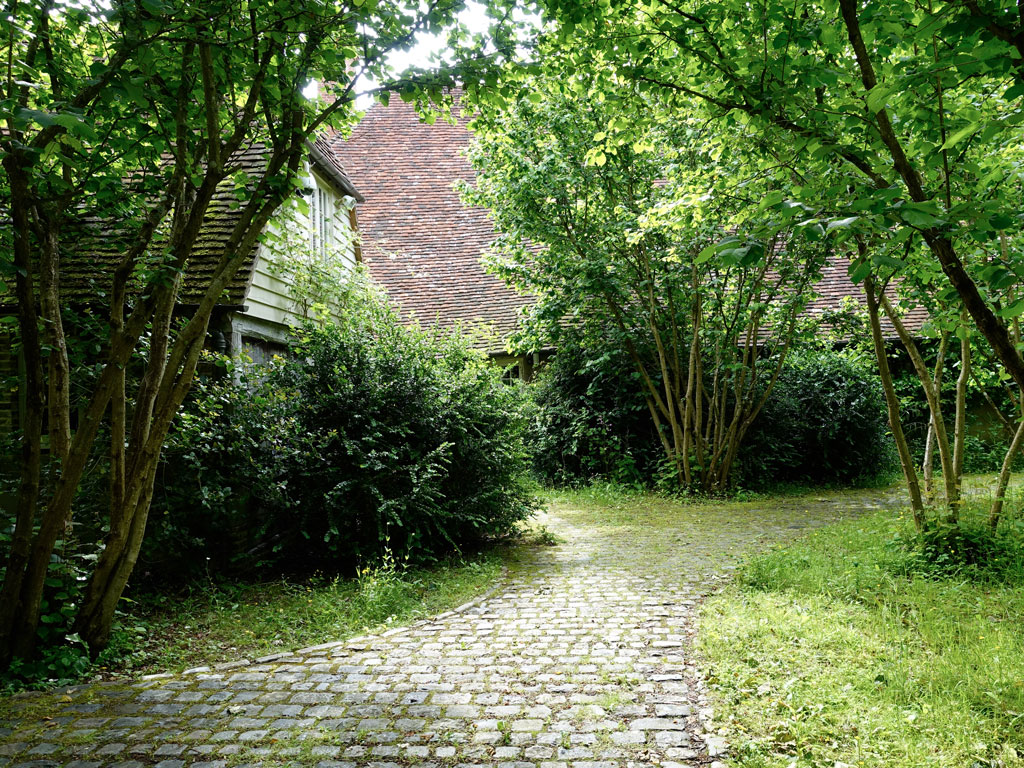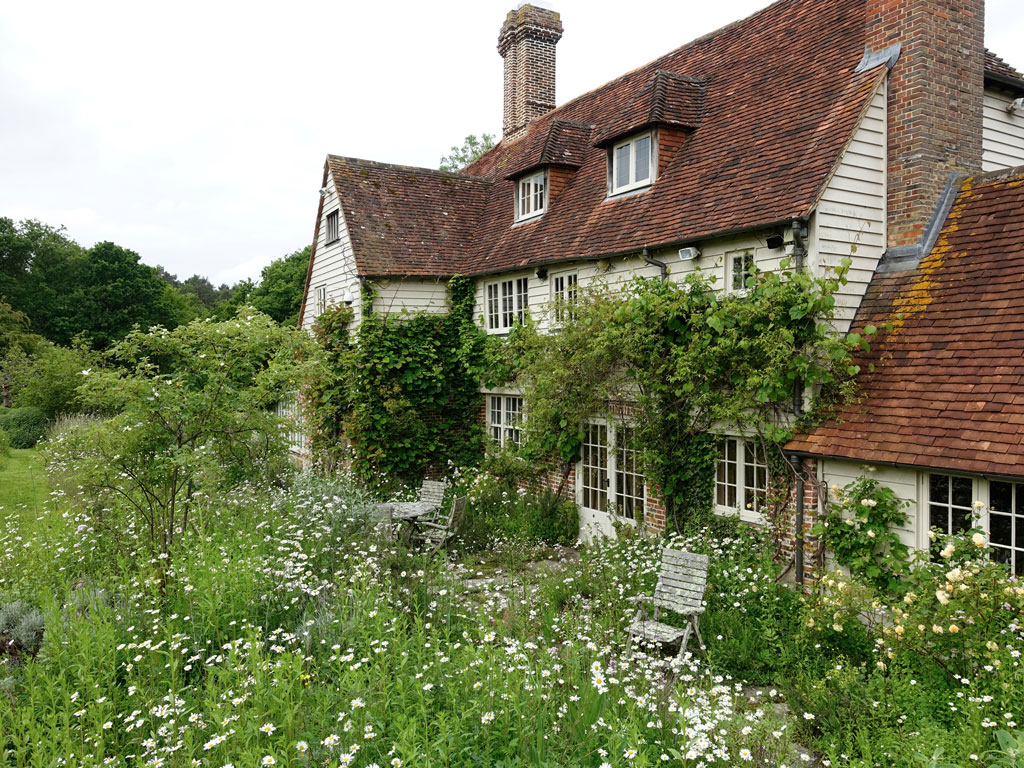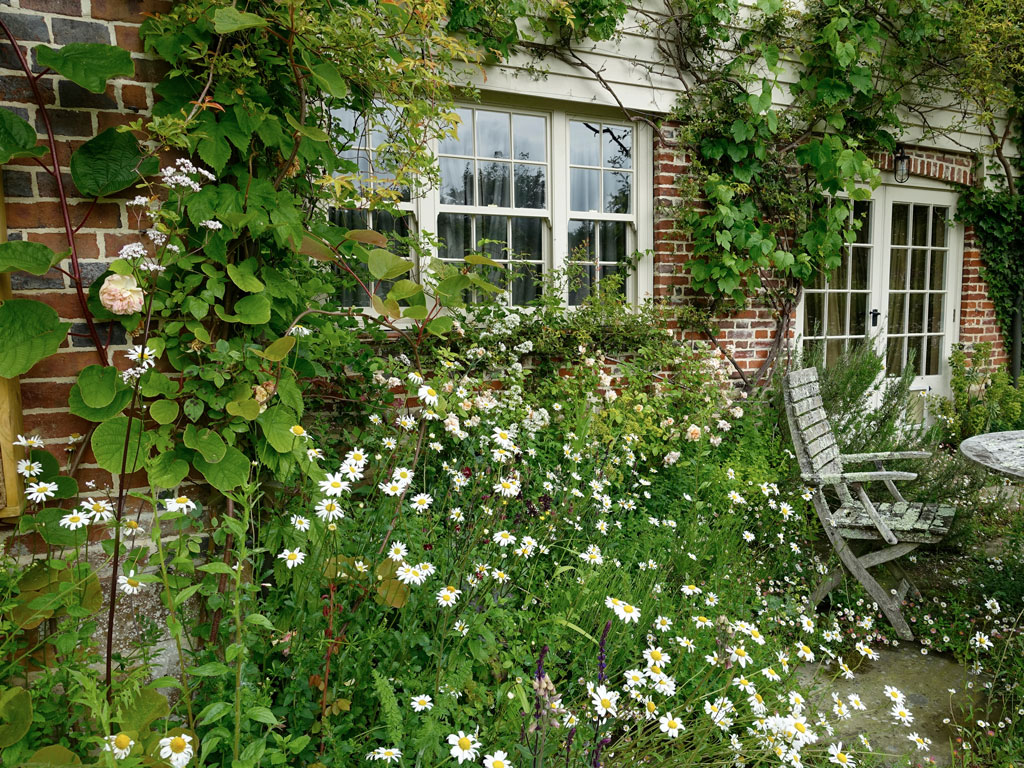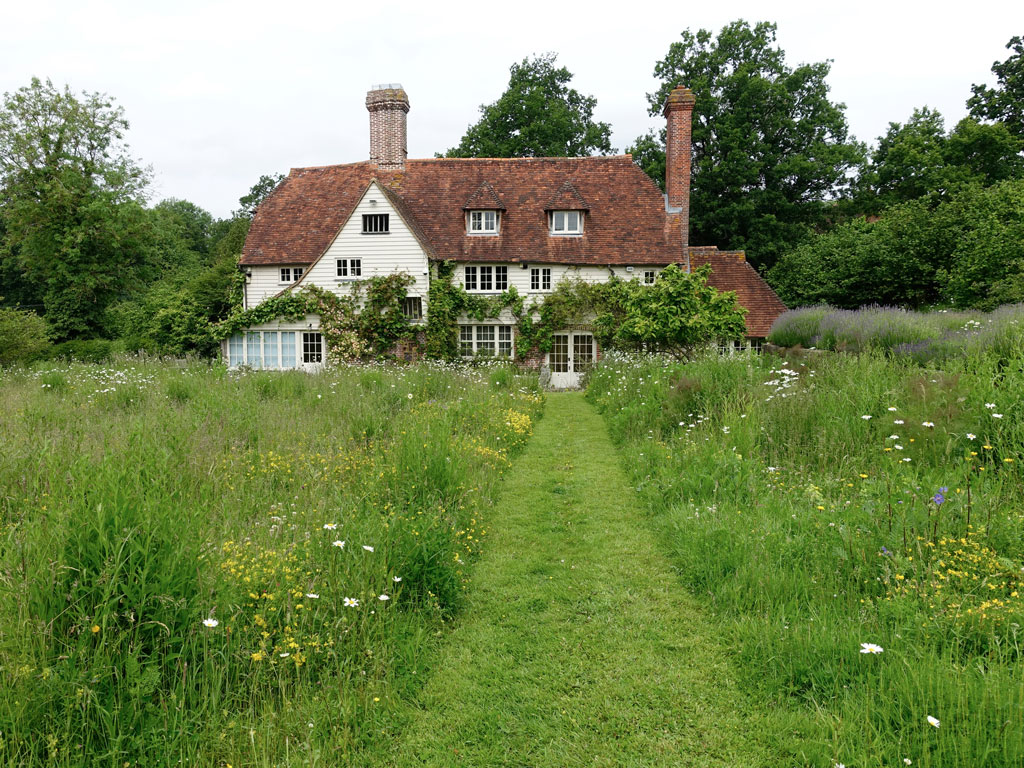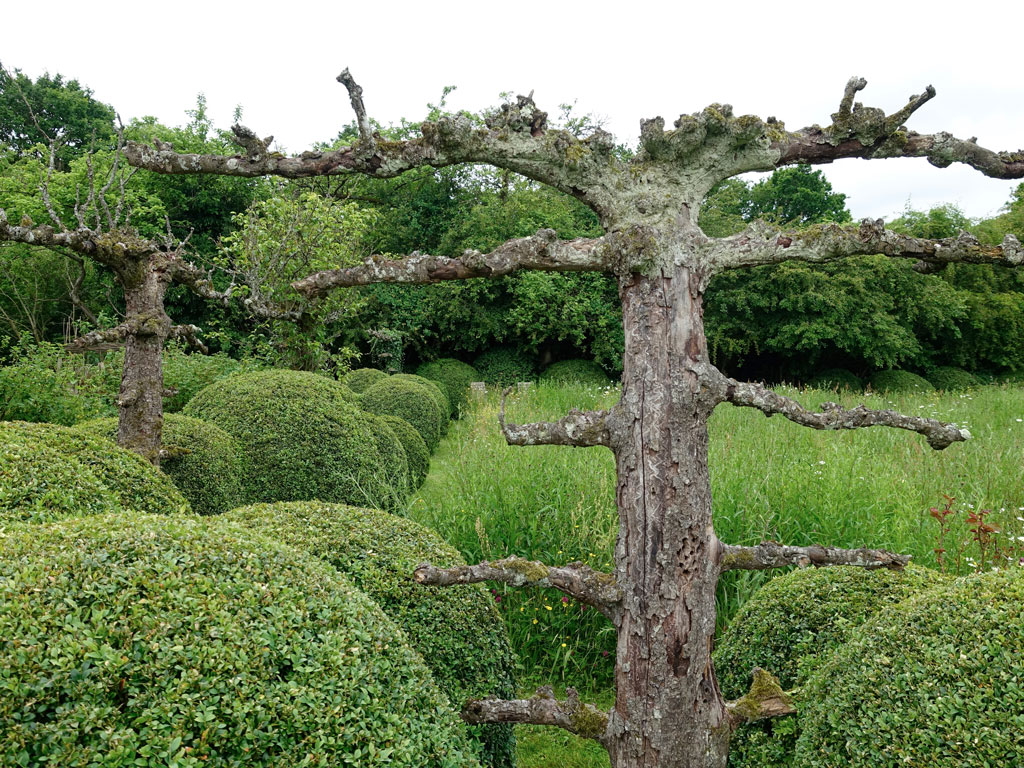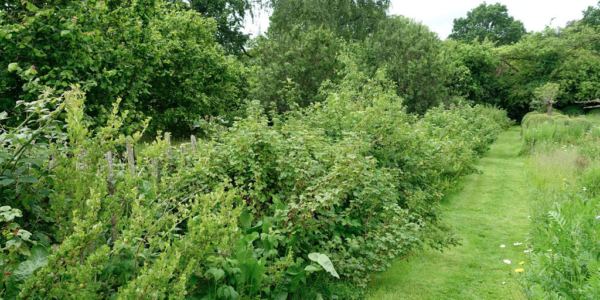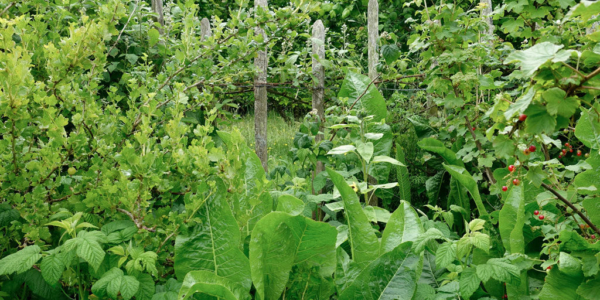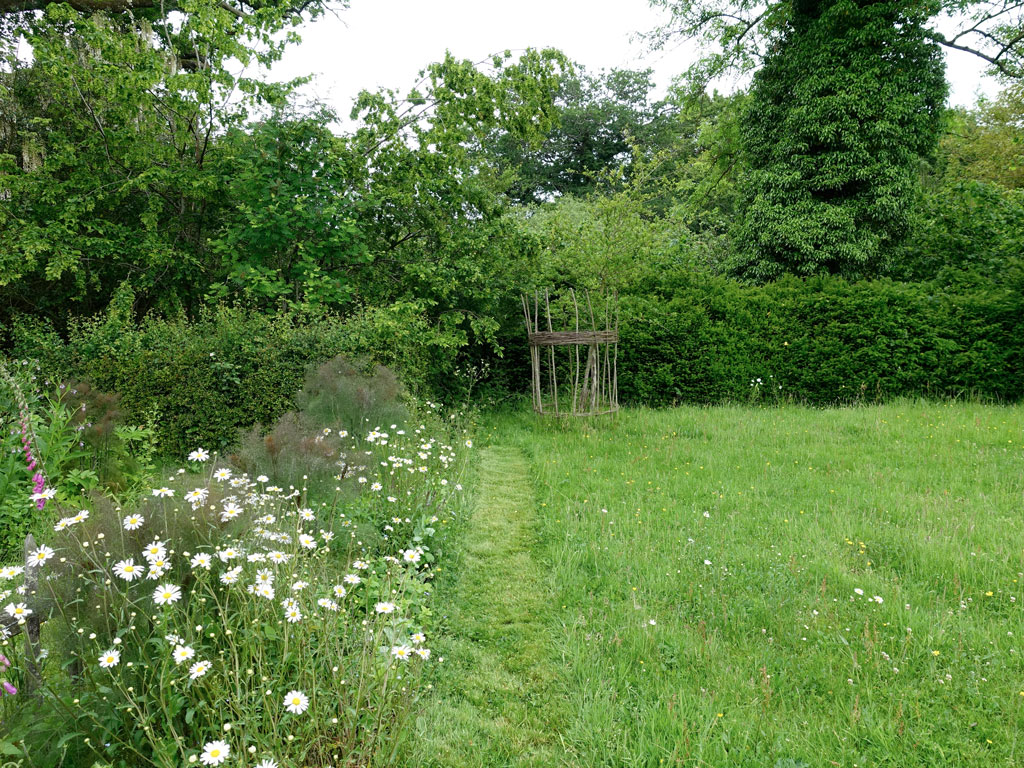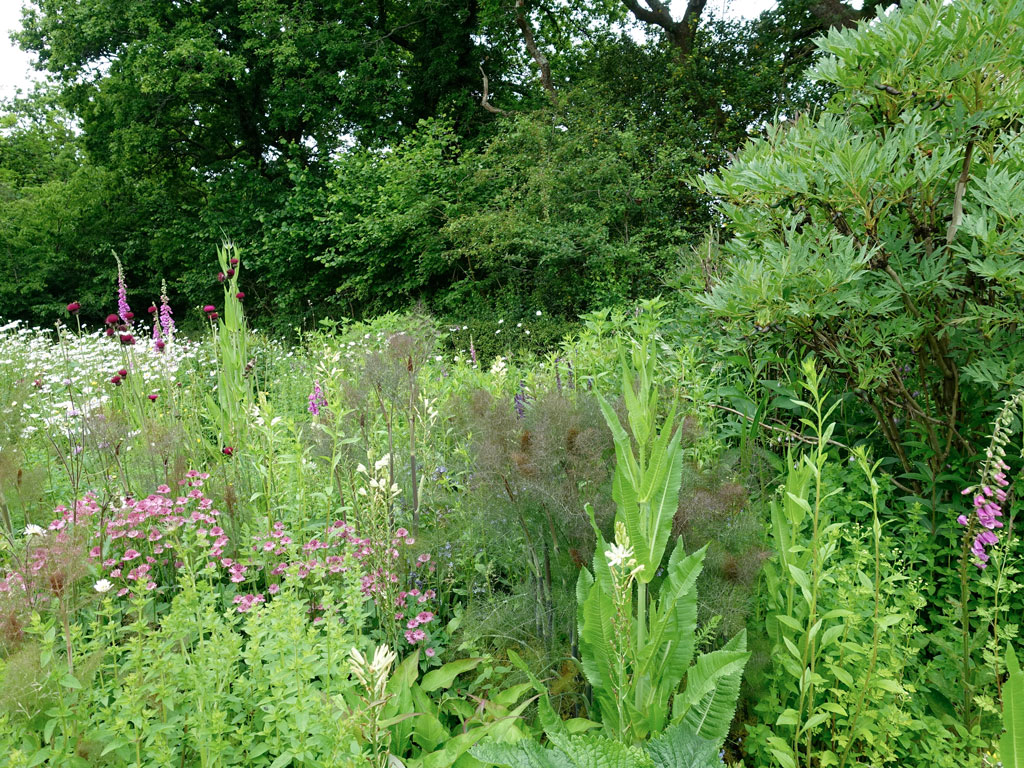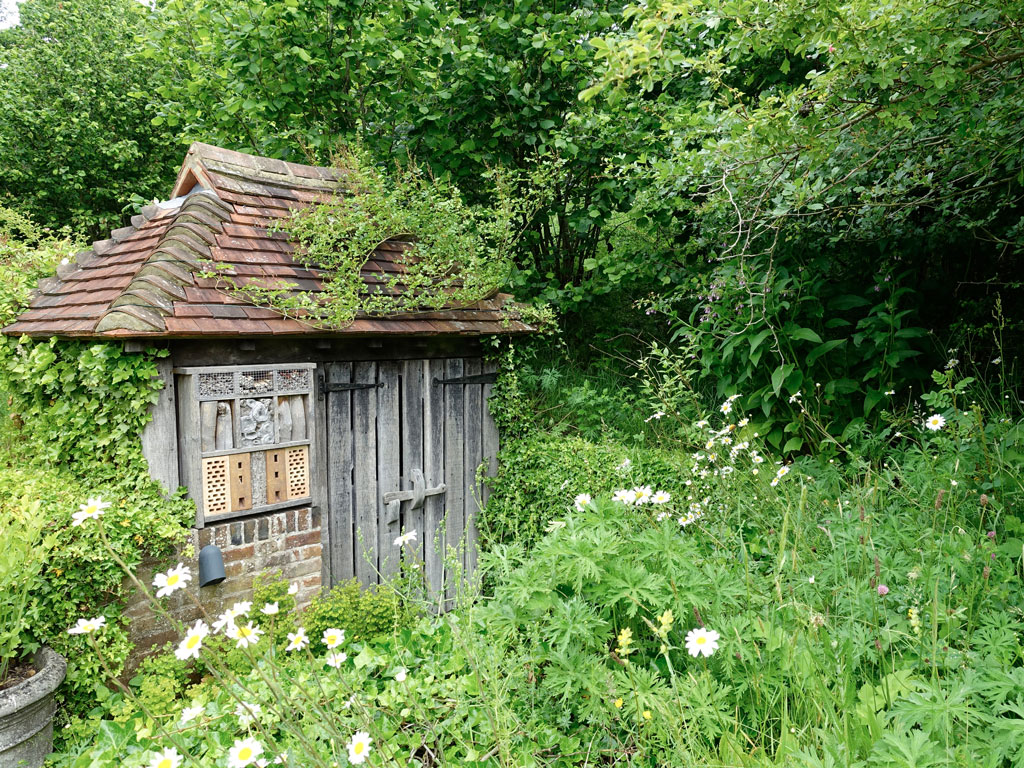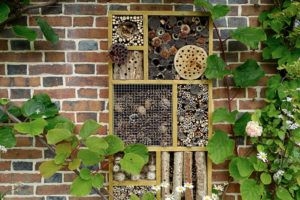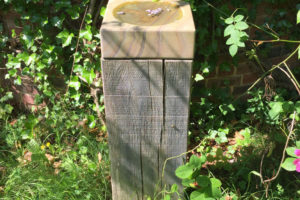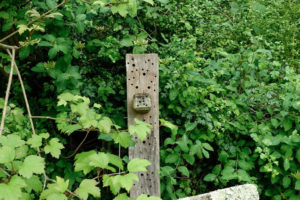Team Visit Review
This Sussex Farm House has a private garden set within a wooded estate in East Sussex. The main part of the garden was designed by Jinny Blom in collaboration with the owners, who came up with the concept of the ‘Anti-Garden’, where the home-owners, wildlife and natural plants can co-exist harmoniously. The lawns were transformed into a series of wildflower meadows and vegetable beds. Productive plants: fruit, vegetables, herbs and medicinal plants are grown throughout.
The approach is through woodland: a nuttery underplanted with orchids, ox-eye daisies and red campion tie into the surrounding chestnut coppice. Each hazel has been coppiced to leave five to six stems remaining, allowing a clear view through the branches and creating airy, dappled shade where the wildflowers can thrive.
The entrance to the house is subtle and enticing, marked simply by a curved cobbled path through the woodland edge.
The house itself appears to be in the process of being reclaimed by nature: sunk below the level of the meadow to the south west, it is covered with climbing plants and wall shrubs: a carefully managed tangle of roses, fig, hop, chocolate vine and kiwi.
The paving is overflowing with plants, including Leucanthemum vulgare, Origanum vulgare, Valeriana officinalis, Salvia nemorosa and Euphorbia, and although entirely natural in effect this was contrived by mounding up soil at the base of the retaining wall and the steps to encourage plants to colonise the area.
There are three meadows, each individual in character. Behind the house mown paths create a hint of formality in a naturalistic meadow.
A line of clipped box provides structure – the different size globes appear to merge into one another at random as if they too have decided to do their own thing, and further definition is provided by the line of predominantly dead espaliered fruit trees. Although these look as if they have always been in the garden, they were actually brought in, creating a dramatic sculptural effect completely in keeping with its setting, as well as a valuable habitat for invertebrates.
To the south western edge of the meadow lies edible hedge of gooseberries, currants, horseradish, bramble, raspberries, damsons, roses and artichokes. A chestnut paling fence provides an informal structure.
The ‘lawn’ is an area where grasses have been allowed to dominate, and provides a restful contrast to the intensity of the wildflower meadows. This leads through into the third meadow, with a more varied palette of perennials and grasses: shade tolerant plants including Astrantia major, Digitalis purpurea and Geranium phaeum beneath the canopy of the trees to the north west, and Melissa officinalis, Leucanthemum vulgare, Helianthus, Oreganum vulgare, Althaea officinalis, Foeniculum vulgare and Amsonia in the open areas. Cirsium, Salvia nemorosa and Sanguisorba provide spots of deep saturated colour.
These meadows need to be monitored to balance the dominance of the grasses and perennial plants such as ox-eye daisy, tansy and buttercup, and the timing of the annual cut adjusted over a 3 – 4 year period to allow for self seeding.
Wildlife clearly rules this garden: plants have been selected to provide food and habitats for birds and insects through the year, and beautifully considered wildlife habitats are placed throughout. However, the wildness is somewhat deceptive, as it has to be carefully managed and requires a gardener for five days per week.
